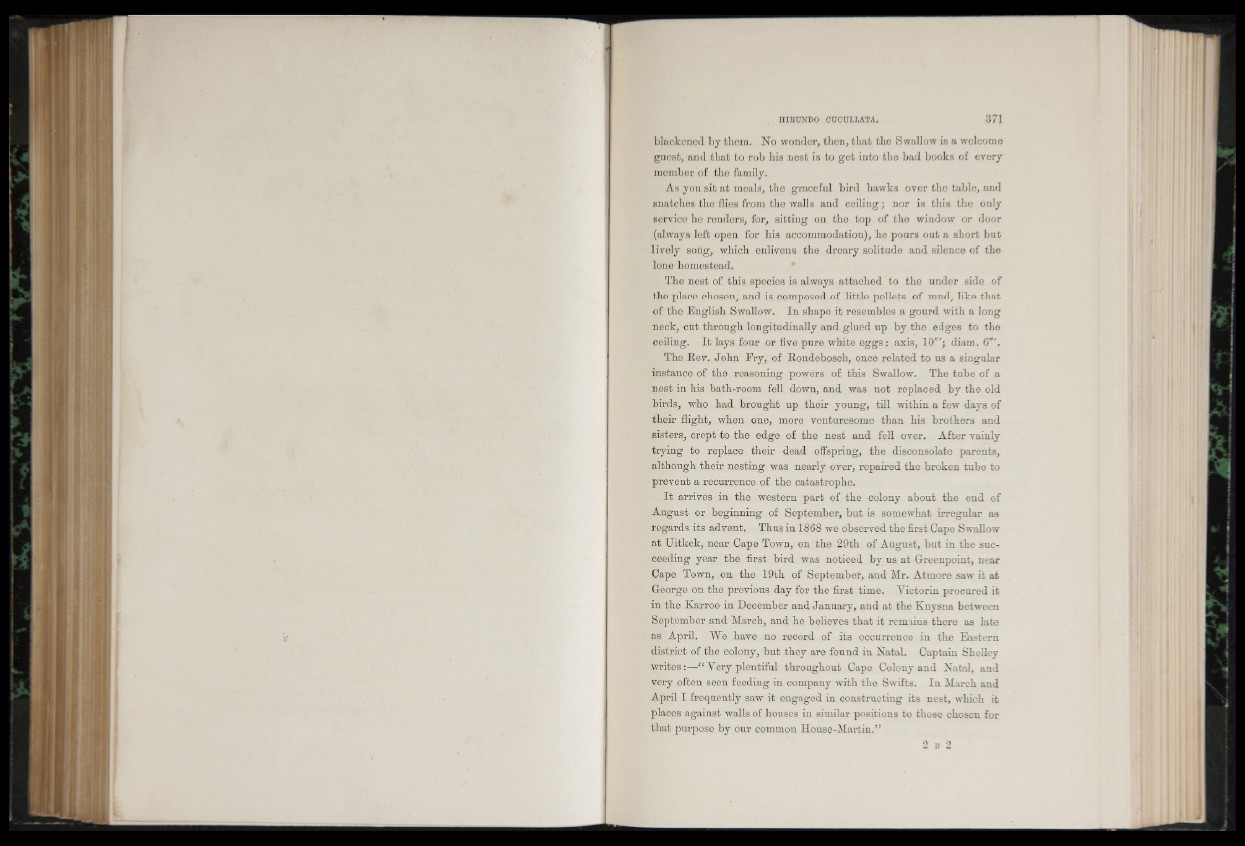
blackened by them. No wonder, thon, that tbe Swallow is a welcome
guest, and that to rob bis nest is to get into tbe bad books of every
member of tbe family.
As you sit at meals, the graceful bird hawks over the table, and
snatches the flies from the walls and ceiling; nor is this the only
service he renders, for, sitting on the top of the window or door
(always left open for his accommodation), he pours out a short but
lively song, which enlivens the dreary solitude and silence of the
lone homestead.
The nest of this species is always attached to the under side of
the place chosen, and is composed of little pellets of mud, like that
of the English Swallow. In shape it resembles a gourd with a long
neck, cut through longitudinally and glued up by the edges to the
ceiling. It lays four or five pure white eggs: axis, 10"'; diam. .
The Rev. John Pry, of Rondebosch, once related to us a singular
instance of the reasoning powers of this Swallow. The tube of a
nest in his bath-room fell down, and was not replaced by the old
birds, who had brought up their young, till within a few days of
their flight, when one, more venturesome than his brothers and
sisters, crept to the edge of the nest and fell over. After vainly
trying to replace their dead offspring, the disconsolate parents,
although their nesting was nearly over, repaired the broken tube to
prevent a recurrence of the catastrophe.
I t arrives in the western part of the colony about the end of
August or beginning of September, but is somewhat irregular as
regards its advent. Thus in 1868 we observed the first Cape Swallow
at Uitkek, near Cape Town, on the 29th of August, but in the succeeding
year the first bird was noticed by us at Gfreenpoint, near
Cape Town, on the 19th of September, and Mr. Atmore saw it at
George on the previous day for the first time. Victoria procured it
in the Karroo in December and January, and at the Knysna between
September and March, and he believes that it remains there as late
as April. We have no record of its occurrence in the Eastern
district of the colony, but they are found in Natal. Captain Shelley
writes:—“ Very plentiful throughout Cape Colony and Natal, and
very often seen feeding in company with the Swifts. In March and
April I frequently saw it engaged in constructing its nest, which it
places against walls of houses in similar positions to those chosen for
that purpose by our common House-Martin.”
2 b 2